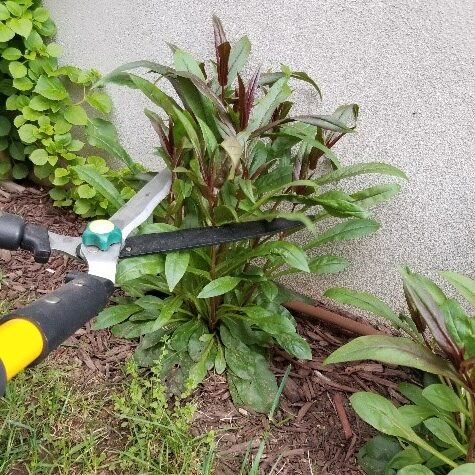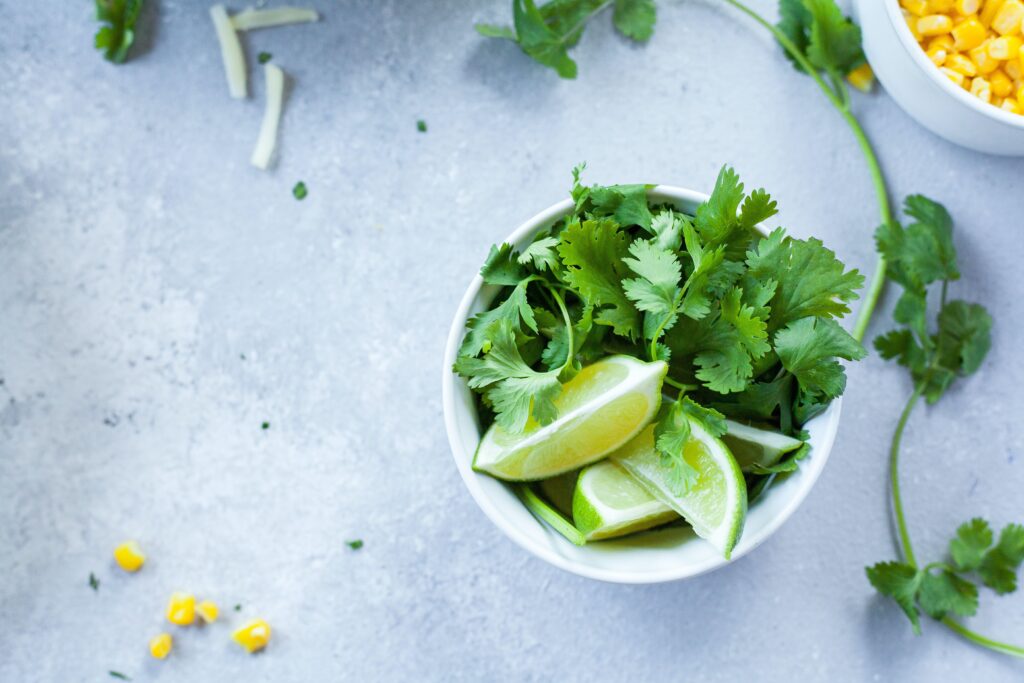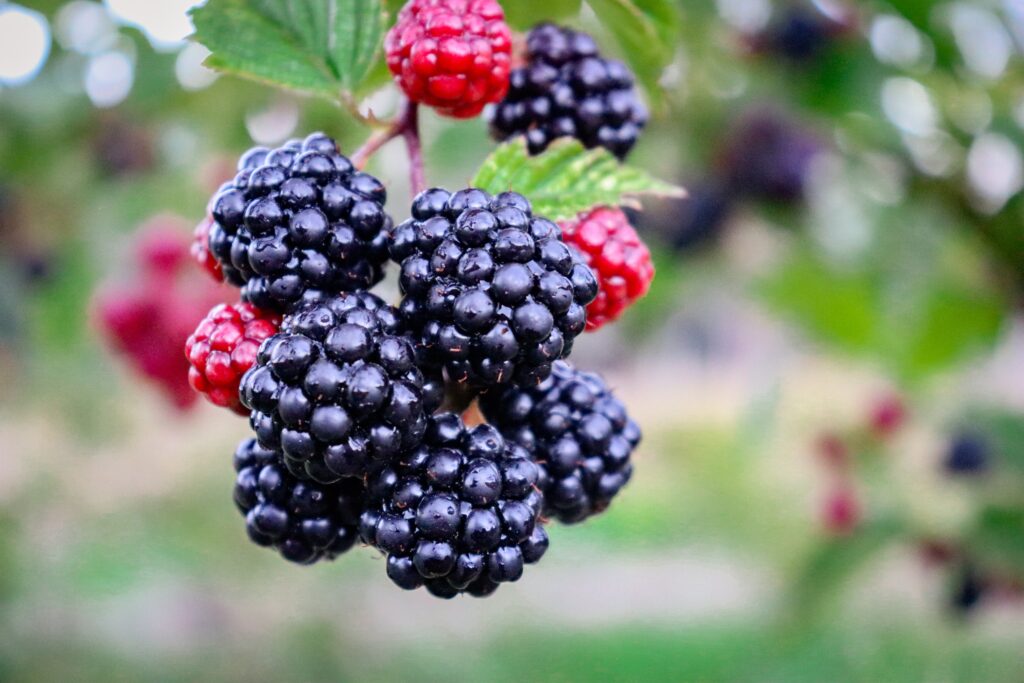
One “deep-seeded” myth I often run across is that we gardeners can locally adapt seed and plants.
This just seems to make sense, doesn’t it? You grow seeds in your garden. You save some every year and plant it the next. Over time, shouldn’t that variety adapt to your garden and yield a strain of plants well suited to your unique area?
Ah, no – our poor brains are on ‘human time’, which is a totally different scale than ‘evolutionary time’.
This concept of locally adapting seed isn’t wrong, but the way it is usually applied is incorrect. Let’s look at the underlying concept to understand it better.

Some of the leaves in this picture are wild leek (Allium tricoccum). This species has been growing in our area for millennia. These are adapted to our unique environment.
The plant adapts and passes on that adaptation in the seed. This must mean that the adaptation is heritable. The DNA of the plant has been altered over successive generations of seed being planted in your garden.
How could the DNA be changing? There are three ways that home gardeners might alter the genes of their crops.
But first, let’s introduce two terms. Allele is a variation of a gene. For example, let’s say bean seed colour is controlled by a single gene. Different versions of this gene allow black, red, yellow, and white beans. These gene variants are alleles. Secondly, the observable appearance of a plant is called its phenotype. Red beans have a different phenotype than black beans.

These beans have different seed coat phenotypes. This is due to the varieties having different alleles. Each variety carries a different version of the gene that is for seed coat colour. Bean varieties are clockwise from top middle: mayocoba, macuzalito, silver cloud, black coco.
1. DNA mutation
This is the way new alleles are created.
1. In the male and female floral parts, gametes (sperm and eggs) are made. As part of this process, the DNA is replicated from the parent plant and half of the DNA is put into each gamete. The DNA is replicated using cellular machines. These machines proofread to check for errors. Sometimes this process fails and an error in the DNA remains in the gamete.
2. If an egg with a DNA error is fertilized with sperm, then the error is passed onto the resulting seed. When the seed germinates, the plant will have that error.
3. In your garden, you could notice a plant with a different phenotype from the rest.
4. If the mutation gave the plant an advantage, then it would produce more seeds than plants without the mutation.
5. You save the seed of this super plant and voila, you have selected for a change in the DNA that gave a better plant in your local environment.
This is all true. The main points are that the DNA mutation is random and the environment is selecting for the best plants.
The catch is that the mutation rate of gametes that results in a visible change in plant appearance is between 1 in 100,000 and 1 in 1,000,000. If you want to observe just one change due to DNA mutation, you either need to be incredibly lucky or plant a million plants (see this handy how-to guide on planting one million plants) (mutation rate reference found here: EMBO J 2000. 19: 4431).
Ok, so chances are that you aren’t introducing new gene variants, but rather observing existing gene variants.
2. Rearrangement of gene variants
I can hear you now: “but I observe different appearances in my plants all the time!” So do I. I notice the variation solely in open-pollinated varieties and not in modern hybrids. What’s going on?

All of the red lettuce in this picture is the same variety, ‘New Red Fire’. The lettuce is usually only lightly tinged with rose, but the plant on the lower right is deep red. This variability is almost certainly due to existing alleles in the population and not the creation of new alleles.
Modern hybrids are genetically uniform.
- Example: tomatoes have two sets of 12 chromosomes. DNA is stored as chromosomes in the cells. DNA is arranged into genes on the chromosomes. Genes give plants their features.
- A tomato plant flowers. The eggs inside the flower have 12 chromosomes.
- Pollen lands on the female part of the flower. Sperm (12 chromosomes each) germinate from the pollen and travel to the eggs.
- Seeds are produced when the eggs are fertilized. The seeds have 24 chromosomes in total.
- Each seed has received the same set of chromosomes with the same set of genes on each chromosome.
- Each seed is the same as the next because each parent passed along the same genes to each seed. Mom and dad had different genes, but mom always passed on the same set of genes, and dad always passed on the same set, but unique from mom.
Some open-pollinated varieties are less genetically uniform
Usually, these varieties have not been subject to the same breeding programs to make sure that the parents are genetically uniform before breeding. This is one of the charms of older varieties. They bring genetic diversity.
This genetic heterogeneity isn’t limited to older varieties. I have noticed different appearances in varieties of plants bred by citizens in modern times. Additionally, some vegetables are such strong self-pollinators that the varieties on the market are open-pollinated and not hybrid. Lettuce is an example.

Some vegetables are such strong self-pollinators that the varieties on the market are open-pollinated and not hybrid. Lettuce is an example.
If you have these open-pollinated varieties in your garden and you plant enough plants to see this diversity, you can select for the allele that give desirable traits. In the above example, you could selectively save the seed from the hard-fruited tomatoes. This would effectively reduce or eliminate the allele for soft fruit from your tomato population.
If you are aware of diseases and pest pressures in your garden, you could even get really fancy and select offspring that show increased tolerance to pests and diseases.
This is doable and fun. The result is an ‘improved’ variety just for you in your garden.
3. Crossing with another variety
What if your favourite variety seems genetically homogenous, meaning when you plant seed year after year, you get visibly identical plants? Maybe you still want to improve it for your local environment. You could always learn about the plant to determine the best way to pollinate the flowers (there are some great video guides out there). That way, you can introduce new alleles by cross-pollinating the plant with a different variety. Of course, the resulting seeds are no longer the original variety and if you shared them, you’d want to make that clear.
Plant the cross-pollinated seed and observe the plants. Save seed from plants with the best traits. Repeat this step over several generations to ensure the plant variety is stable (your desirable traits remain). You need to be ruthless in the garden and rogue (remove) any off-type plants (an example of the process is here)!
Even a home gardener with a little space can really get into plant breeding as a hobby. If you think that’s you, check out this website for a basic definition of mass selection, recurrent selection, and top-crossing.
By this method, you can create a new variety suited to your tastes and garden. How exciting is that?
Summary
For you to be locally adapting seeds to your garden, you must be doing one of these things:
- planting a million plants to find randomly-occurring DNA mutations then observing if this mutation gives the plant an advantage.
- growing an open-pollinated variety that is observably heterogenous (the plants have varying appearances), then selecting for desirable traits in your garden
- crossing two different varieties, planting the seeds, and selecting for desirable traits
Consequently, if you are planting a few plants of a variety then saving seed and replanting next year, you aren’t locally adapting the seed. You’re just having fun in the garden. Keep going!
References
See our article on seed saving.
This is a good article on bean seed genetics.





About The Author: Amy Turnbull
Scientist, researcher and professor at Fanshawe College. Avid grower of edibles in her home garden.
More posts by Amy Turnbull